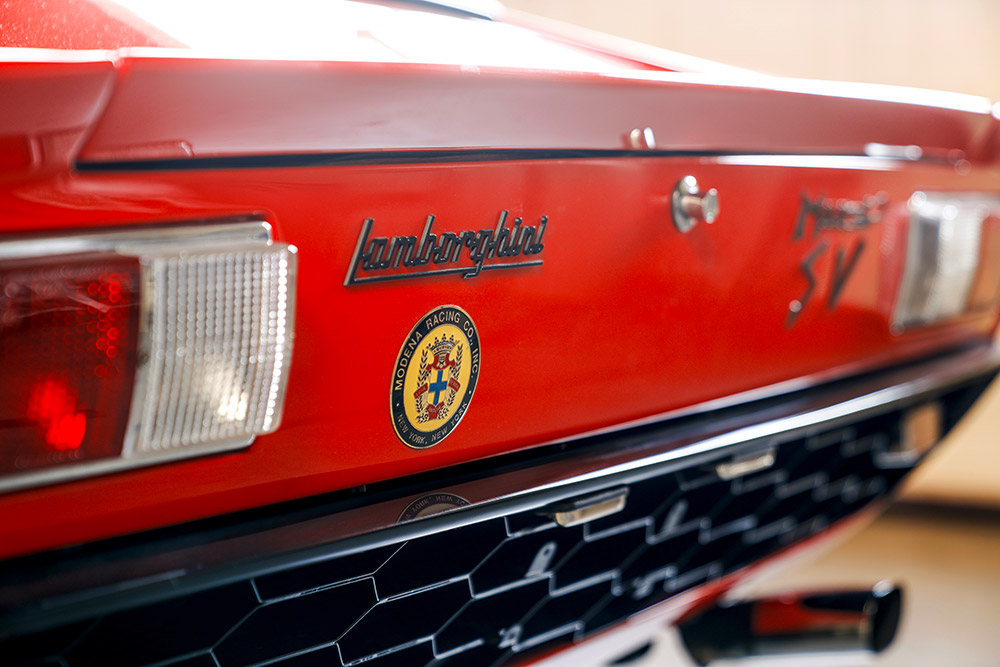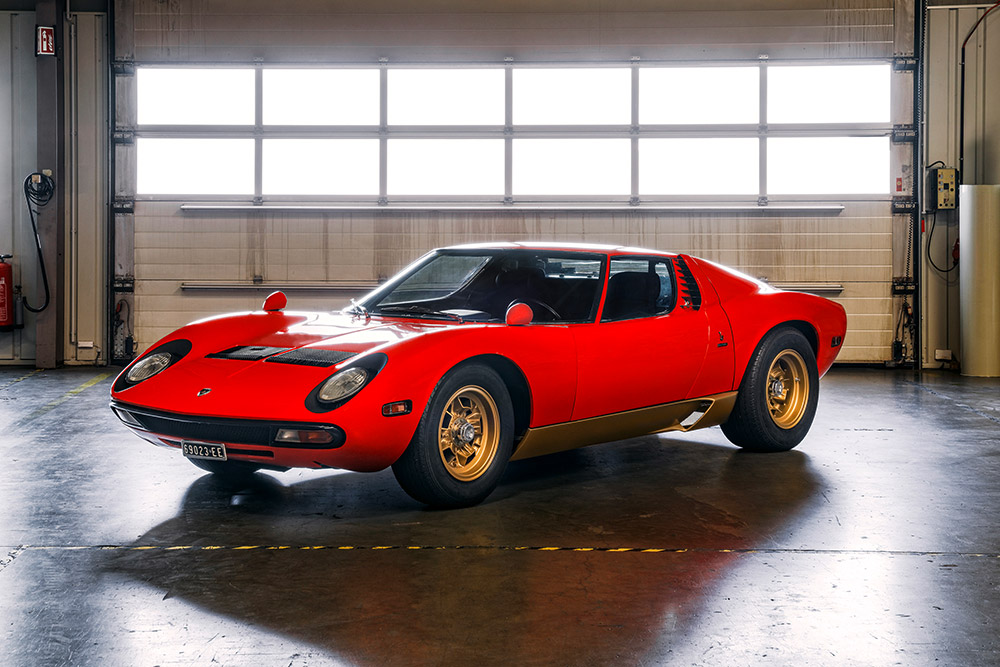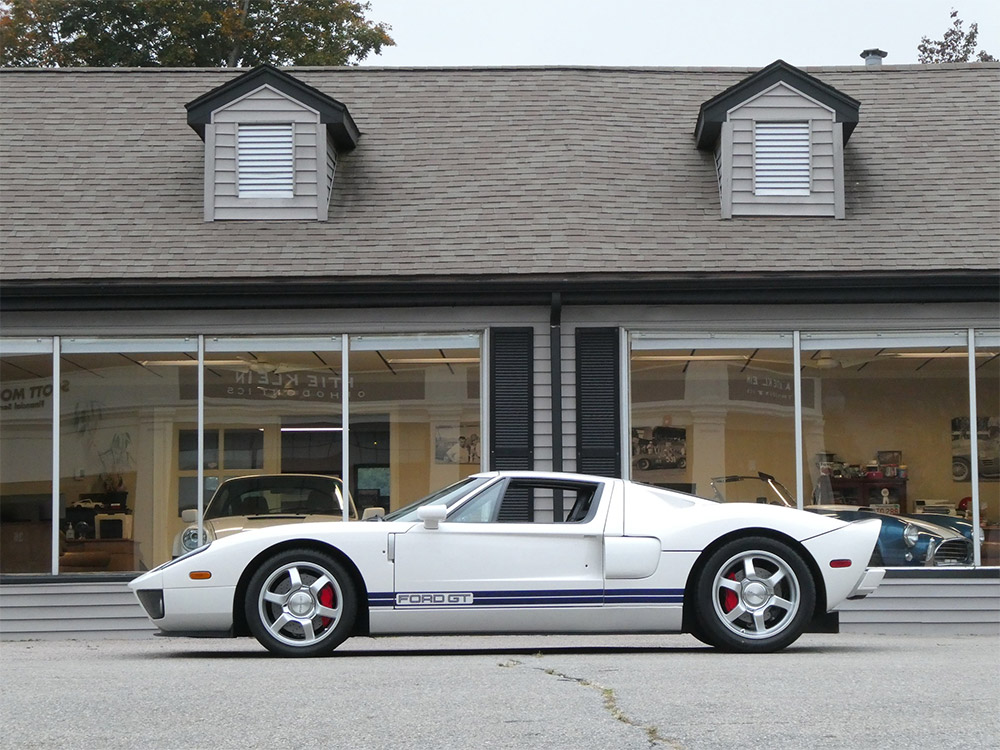When first unveiled at the 1966 Geneva Salon, the Lamborghini Miura P400’s impact was nothing short of extraordinary. It looked like no other car on the road and marked a paradigm shift in the design of high-performance cars, with sensuous lines dictated by the placement of its engine, mounted transversely behind the passenger compartment. Marcello Gandini penned the gorgeous design at the age of 27, and it encapsulated the youthful spirit of the age. The car was beautifully styled throughout with intricate details, such as the shape of the doors, which were supposedly modelled off the horns of a raging bull. To many, the Miura boasted the perfect automotive silhouette, equally sensual and muscular. As perhaps the first true supercar the world had ever seen, the Miura’s performance matched its looks.

The final iteration of the Miura, the P400SV, featured numerous improvements over the already spectacular P400S that came before it. The front structure of the chassis was strengthened, while the rear suspension was revised to improve handling along with wider rear wheels. In addition, the cylinder heads received larger inlet valves and the triple-choke downdraught Webers incorporated larger jets and venturis. The most noticeable changes to the SV were cosmetic with a large rear body clam for the increased track, along with different rear lights and deletion of the headlamp eyelashes; all of these changes resulted in a Miura that now balanced beauty and aggression in perfect measure for a far more purposeful supercar.
CHASSIS NUMBER 4884: THE FIRST AMERICAN SV
Lamborghini built just 21 examples of the Miura SV specifically for the United States market. All these cars carried subtle differences to normal SVs in order to meet federal regulations including reflective side markers, regulation-coloured indicators, wing-less octagonal centre wheel nuts, while the interior featured three-point seatbelts and different warning lights. In addition, the first eight cars imported to the U.S. featured 200-mph speedometers and single-sump oil system, unlike the later 13 that received 190-mph speedometers and split-sump lubrication. Meeting EPA emissions regulations was the hardest part, and this fell to newly appointed importer Alberto Pedretti of Modena Racing Company Inc. of New York.

This Miura SV, chassis number 4884, was originally invoiced to Bob Estes, the importer whom Lamborghini were falling out with due to the irregular supply of cars; the pro-forma invoice notes that many of the U.S.-spec options, importantly including air conditioning and ‘air pump’ which would be key to meeting the EPAs requirements. In addition, the invoice confirms the Rosso Corsa over Bleu colours. By June 1971, Lamborghini had reassigned chassis 4884 to Alberto Pedretti and it was finally delivered on 18 June. Before leaving for America, Peter Coltrin found the time to shoot 4884, a photographer whose work of cars produced by manufacturers in Emilia-Romagna would prove legendary; these shots would also be used for Lamborghini publicity materials and the SV brochure.
Upon arriving on the East Coast, Alberto Pedretti took chassis 4884 up to Ann Habour, Michigan for EPA testing. Pedretti, an automotive engineer by trade, had previously been to Sant’Agata to help develop the air pump system for venting vapour to a carbon canister. After 10 days of adjustments and testing with the “sperimentale” engine, as described by Pedretti, this car finally passed and the SV had officially landed in the U.S.A.

Pedretti applied a Modena Racing Co., Inc. sticker to the rear and set about selling SVs to America with an appearance with 4884 at the 1971 Boston Auto Show for the SV’s debut. Following the show, this Miura was sold to its first owner, Jack Robinson of Goddard, Kansas, who is said to have regularly tested the Miura SV’s performance on the flat Kansas terrain and reportedly drove it to the Bonneville Salt Flats. In 1977, Astro Motors, of Topeka, sold the car on Robinson’s behalf to Dr. Alan Brown of Savannah, Georgia, with mileage being confirmed as 12,275 miles. Shortly after taking ownership, Dr. Brown wrote a letter to Automobili Lamborghini SpA, the response to which confirmed that chassis number 4884 was indeed the first U.S.A. homologation SV sent over to obtain type-certification.
Upon Dr. Brown’s untimely passing in 2005, the car was purchased by Miura enthusiast Joe Sackey with an odometer reading of 19,548 miles. He then sent it to Miura restorer Gary Bobileff of San Diego, California, for a complete and thorough restoration to factory specification, down to the sourcing of correct Bertone seat material. Following its concours-quality restoration, chassis number 4884 won first in class at the 2006 Concorso Italiano.

Sackey chose chassis number 4884 as the cover car for The Lamborghini Miura Bible upon its publication in 2008, and devoted an entire chapter to his pursuit, acquisition, and restoration of this significant SV. In 2007, the car was featured in the 25th anniversary issue of Classic and Sports Car magazine. It also appeared earlier on the cover of the famous Lamborghini Miura by Peter Coltrin and Jean-Francois Marchet.
Under current ownership since 2015, the car was imported into Germany via the United Kingdom and has benefitted from thorough cosmetic and mechanical reconditioning in 2017 by Lambowerkstatt of Seewald-Erzgrube. Invoices on file for this work total in excess of €170,000. This included dismantling, stripping, dry-ice cleaning and repainting the body, applying body-cavity protection, sound deadening, and underbody sealant, refurbishing the wheels and wheel nuts, and mounting new tyres and suspension struts. In addition, the engine was disassembled and refurbished with new bearings, cylinder liners, valve guides, timing chains, gudgeon pins, air trumpets and piston rings. The carburettors, alternator, oil pump, and water pump were also overhauled, and the belts, seals, and air-conditioning compressor replaced. The transmission was refurbished with a new clutch, bearings and synchronisers, the differential was overhauled, and the powertrain was converted to separate sumps for the engine and transmission. Bidders should note that the car has been used only lightly since this work took place, and so it is recommended that the engine is serviced and run in prior to regular usage. Various electrical components were also replaced, as was the turn-signal glass, header tank, and loudspeakers. More recently, an RM Sotheby’s Specialist has inspected this Miura and we can confirm that many of its original body number stampings are present, and the odometer displays 21,069 miles at the time of cataloguing.

Powered by its original “sperimentale” engine and expertly restored to factory specifications, this first U.S.-delivery Miura SV is historically significant and remarkably authentic, instantly recognisable to Lamborghini aficionados.
Click here for more information.







